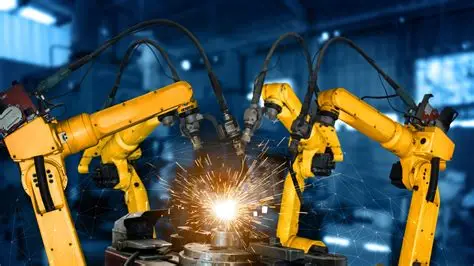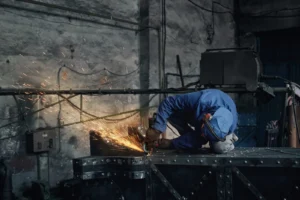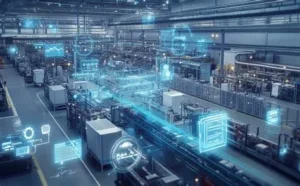This is the world of on-demand manufacturing, and it’s being accelerated at an unprecedented pace by Artificial Intelligence (AI).
In this new era, AI isn’t just about robots taking over repetitive tasks. It’s about machines learning to optimize production, predict failures before they happen, design smarter, and respond in real time to market and customer needs. AI is redefining what it means to manufacture, making the process smarter, faster, more precise, and highly personalized.
Let’s explore how AI is transforming the on-demand manufacturing landscape—and why now is the time for industrial players to lean in.
What is On-Demand Manufacturing?
At its core, on-demand manufacturing refers to the practice of producing goods only after an order has been received, rather than making large quantities in advance and storing them. This approach allows companies to:
- Minimize inventory costs
- Reduce material waste
- Enable greater customization
- Accelerate production cycles
Instead of relying on forecasts and stocking warehouses with finished goods, companies wait for customer orders and then produce in real-time, or close to it.
This model is increasingly relevant in industries like:
- Medical and healthcare: Custom implants, surgical tools
- Automotive: Replacement parts for rare or discontinued models
- Aerospace: Precision components with low-volume demand
- Consumer electronics and fashion: Personalized gadgets, shoes, or wearables
And driving this entire system into high gear is Artificial Intelligence.
How AI Powers On-Demand Manufacturing
1. AI-Driven Demand Forecasting
In traditional manufacturing, inaccurate forecasts can lead to overproduction or stockouts. But in on-demand settings, precision is critical.
AI algorithms analyze a wide range of data sources—past sales data, seasonal trends, economic conditions, online behavior, even social media chatter—to predict demand with remarkable accuracy.
For example:
- An AI system might identify a surge in electric vehicle interest from online trends and forecast an uptick in EV-related part orders.
- It can track localized demand to help small, distributed factories prepare region-specific inventories.
Impact: AI forecasting can reduce excess inventory by up to 30% and improve order fulfillment rates by over 95% (Deloitte, 2024).
2. Generative Design and Smart Prototyping
AI doesn’t just help predict what will be needed—it can also help design it better.
Generative design tools use AI to explore thousands of design variations based on user-defined constraints like weight, material strength, budget, or durability. The AI runs simulations and outputs the most optimal version that a human designer might never have considered.
For instance, General Motors used generative design software to create a single part that replaced 8 welded components, reducing the weight by 40% and improving durability.
Impact: Reduces design cycles from weeks to days, shortens time-to-market, and enables truly customized solutions for individual orders.
3. Predictive Maintenance with IoT and AI
Manufacturing downtime is expensive, especially in on-demand setups where flexibility and responsiveness are key. Here, AI teams up with Industrial IoT (IIoT) sensors embedded in machines to constantly monitor their health.
AI models learn the normal behavior of equipment—vibrations, temperature, pressure—and detect anomalies that signal early signs of failure.
Example: A CNC machine begins vibrating beyond its usual pattern. The AI system identifies it and triggers a maintenance ticket before the machine breaks down.
Impact: Predictive maintenance reduces unplanned downtime by 30–50% and lowers maintenance costs by up to 25% (McKinsey, 2023).
4. AI-Optimized Scheduling and Production Planning
In a dynamic environment where customer orders vary daily, AI plays a crucial role in scheduling production tasks, allocating resources, and streamlining workflow.
Rather than relying on human planners, AI systems can instantly:
- Reassign tasks when a machine goes down
- Balance loads across multiple machines and shifts
- Optimize job orders to reduce setup time and energy consumption
Siemens’ digital factories use AI-based scheduling systems across 200+ sites to reduce idle time and increase throughput, even with high product variability.
Impact: Helps manage real-time orders, ensure faster delivery, and improve machine utilization without human delays.
5. Quality Control through Computer Vision
Manual inspection is slow, expensive, and inconsistent. AI-driven computer vision systems now inspect parts for defects at a speed and accuracy unmatched by humans.
High-resolution cameras paired with deep learning algorithms scan parts for defects like:
- Micro-cracks
- Surface inconsistencies
- Dimensional errors
Case Study: Bosch uses AI-based visual inspection systems that identify microscopic surface defects in automotive parts with over 99% accuracy, drastically reducing returns and rework.
Impact: Increases product quality, reduces wastage, and protects brand reputation.
6. Mass Customization at Scale
One of AI’s most exciting applications is its ability to power hyper-personalization. Whether it’s a custom-fit orthopedic implant or a personalized drone casing, AI can analyze customer data—like body scans, measurements, and preferences—and generate custom designs ready for manufacture.
Adidas’ Futurecraft 4D shoes used AI to design custom midsoles for runners, combining customer data with material science for ultimate personalization.
Impact: Makes personalization economically viable, even for small batch sizes.
7. Smarter Supply Chain Management
AI doesn’t just stay inside the factory. It looks beyond suppliers, logistics, inventory, and distribution.
Using real-time data from transport providers, supplier networks, and geopolitical sources, AI models can:
- Re-route shipments during delays
- Identify at-risk suppliers
- Optimize reorder points
During the 2020–2022 chip shortage, companies using AI supply chain tools were twice as likely to recover production within 3 months (Capgemini, 2023).
Impact: Enhances supply chain resilience, reduces delays, and supports global agility.
Benefits of AI in On-Demand Manufacturing
1. Reduced Costs Across the Board
AI reduces operating costs in multiple ways—less inventory, fewer defects, fewer machine breakdowns, and better use of energy and manpower. Every error prevented and every process optimized contributes to the bottom line.
2. Faster Time to Market
By accelerating design, automating planning, and reducing delays, AI enables companies to bring products to market weeks or months faster—a huge competitive advantage in fast-changing markets.
3. Higher Quality and Consistency
AI systems don’t get tired or overlook errors. They ensure consistent inspection and correction across batches, ensuring even the 1000th part is as precise as the first.
4. Flexibility and Scalability
With AI’s help, manufacturers can scale up or down easily based on real-time demand. Whether it’s a single part or a batch of 500, AI helps manage complexity effortlessly.
5. Sustainability and Waste Reduction
AI enables smarter material usage, minimal overproduction, and fewer defects, leading to lower carbon footprints and more sustainable operations.
6. Empowered Workforce
Rather than replacing humans, AI allows workers to focus on creative, strategic, and supervisory tasks. Operators become analysts and supervisors of AI-guided processes—an upgrade, not a downgrade.
The Road Ahead
The next phase of AI in on-demand manufacturing includes:
- Edge AI: Real-time AI running directly on machines without cloud latency
- Self-healing factories: Where machines fix themselves or reconfigure lines
- Autonomous micro-factories: Compact, AI-managed units located close to end-users for local production
- AI + Additive Manufacturing: Smarter 3D printing with real-time design-to-manufacture adjustments
Final Thoughts
The combination of AI and on-demand manufacturing is not a distant dream—it’s happening right now. From prototyping and production to quality assurance and supply chain, AI is the invisible engineer working behind the scenes, ensuring speed, precision, efficiency, and personalization.
For companies like Mechkonnect Industrial Solutions, embracing AI is no longer optional—it’s a strategic imperative to stay competitive, relevant, and responsive in a world that demands more from less.
The factories of the future will not just be automated—they’ll be intelligent.




